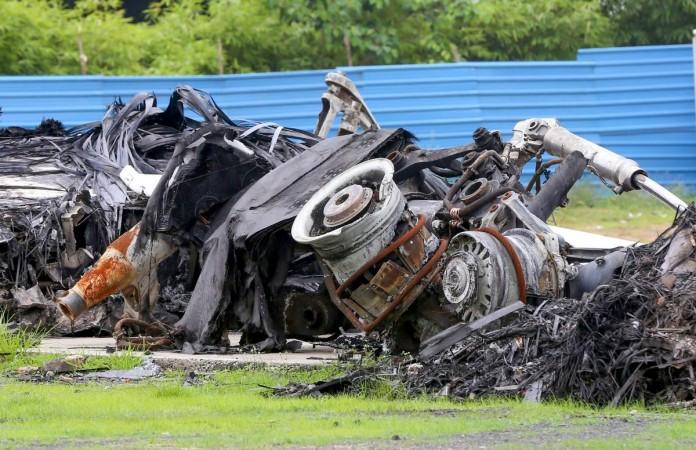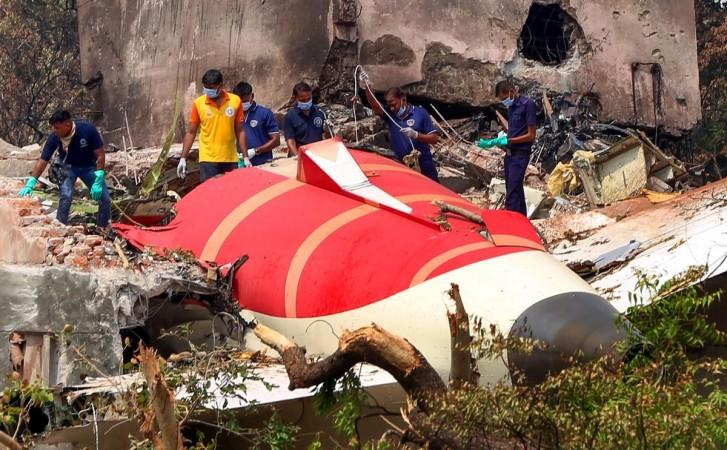
In the wake of the Air India AI-171 crash, investigators are diligently examining the Boeing Dreamliner wreckage to determine the cause of the tragic incident. The crash, which occurred on June 12, has led to a comprehensive investigation, with particular attention on the aircraft's tail section. This part of the plane may hold critical evidence of an electrical malfunction that could have contributed to the disaster.
The ill-fated flight was airborne for only 26 seconds after taking off from Runway 23 at Sardar Vallabhbhai Patel International Airport in Ahmedabad before the catastrophe unfolded. Investigators have focused on the empennage, or tail assembly, which appears to have experienced a "contained electric fire." This fire was limited to a few components located in the rear of the aircraft, according to officials familiar with the investigation. Notably, the tail section detached from the main body and remained largely unaffected by the subsequent explosion and fuel fire that consumed the rest of the plane.

Components from the tail section have been carefully identified and stored securely in Ahmedabad. Investigators believe these components are crucial for a thorough analysis of a potential malfunction in the aircraft's electrical supply during takeoff. An official involved in the investigation stated, "They hold the key for a detailed analysis of a possible malfunction in the electric supply of the aircraft during lift off."
Black Box Analysis
A significant aspect of the investigation involves the Enhanced Airborne Flight Recorders (EAFR), commonly known as black boxes. The aft EAFR, or rear black box, was discovered on the rooftop of the BJ Medical College hostel mess building on June 13. Unfortunately, it had suffered extensive internal thermal damage, making conventional data retrieval methods ineffective. When the memory card was inspected, the damage was found to be severe.
In contrast, the forward EAFR, or front black box, was found amidst the charred wreckage debris on June 16. Although it was "burnt and covered in soot," the Aircraft Accident Investigation Bureau (AAIB) managed to extract data from it. The preliminary report from the AAIB, released on July 12, highlighted the challenges faced in retrieving data from the rear black box, while the front black box provided valuable insights. The data extracted from the front black box included approximately 49 hours of flight data and six flights, including the ill-fated event flight. Additionally, the audio recovered from this black box, which included the crash event, spanned two hours.
Both black boxes are designed to withstand extreme conditions, housed in robust, anti-corrosion material casings to endure high temperatures and impacts. The rear black box relies on the aircraft's main electrical system for power, while the front black box is equipped with an independent battery, ensuring it continues recording even in the event of a power shutdown.
Impact on Families
The investigation has also brought to light the emotional toll on the families of the victims. Many have gathered at the DNA testing center in Ahmedabad, seeking closure and answers about the fate of their loved ones. The tragedy has left a profound impact on the community, with families grappling with the loss and the uncertainty surrounding the crash.
Historically, aviation accidents involving electrical malfunctions have been rare but not unprecedented. One notable incident was the crash of Swissair Flight 111 in 1998, which was attributed to a fire caused by faulty wiring. The investigation into that crash led to significant changes in aviation safety regulations, particularly concerning in-flight entertainment systems and wiring standards. Similarly, the Air India AI-171 disaster may prompt a reevaluation of safety protocols and maintenance procedures, especially concerning the electrical systems of aircraft.
The investigation into the Air India crash is ongoing, with experts from various fields collaborating to piece together the events leading up to the disaster. The focus on the tail section and the black boxes underscores the complexity of the investigation, as officials work to determine whether an electrical malfunction played a role in the crash.
In the broader context of aviation safety, this incident serves as a stark reminder of the importance of rigorous maintenance and inspection protocols. The aviation industry continually strives to enhance safety measures, learning from past incidents to prevent future tragedies. The findings from the Air India investigation may contribute to this ongoing effort, potentially leading to improvements in aircraft design and safety standards.
As the investigation progresses, the families of the victims and the public await answers. The tragedy has underscored the need for transparency and accountability in aviation safety, with the hope that lessons learned from this incident will prevent similar occurrences in the future. The Air India AI-171 disaster is a somber chapter in aviation history, but it also represents an opportunity for growth and improvement in the pursuit of safer skies.

















